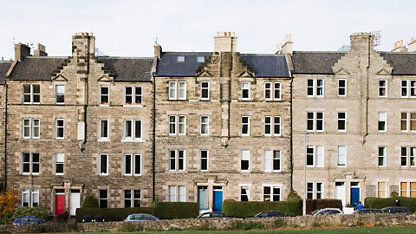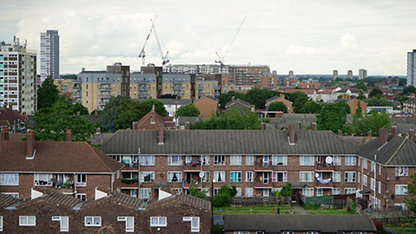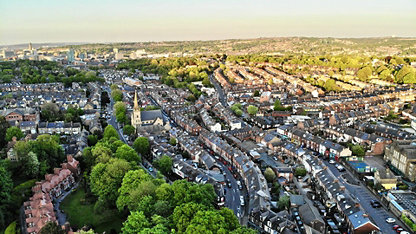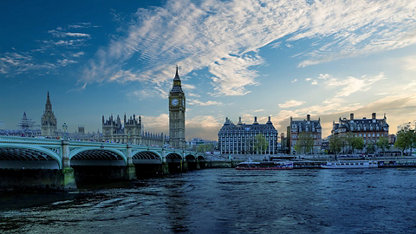The term Build Back Better was a concept coined to provide a framework by which countries can rebuild and implement robust risk mitigation against natural disasters. It has since been adopted by international institutions including the OECD, UN and WHO, with multinational companies and national governments, from the UK to Thailand, following suit.
In the wake of COVID-19, Build Back Better carries a new resonance, with many countries adopting it as part of their post-pandemic policies - augmented to include recovery, a chance to re-evaluate the rules, and aiming for positive changes wherever possible. Instead of a return to business as usual, it’s an opportunity to think big; digitisation, the economy, education, the environment, health, infrastructure and working patterns – all have room for positive reform that could benefit many.

Craig Ross
A requirement for resilience in buildings
But what does build back better mean for our built environment? It’s an important topic which the RICS World Built Environment Forum has recently explored in a series of articles and webinars, but crucially one which is underpinned by a theme of resilience.
Whether in response to the immediate public health crisis or pressing pre-existing mega-trends such as climate change, there is an opportunity to work towards a more a resilient built environment than what we had before the pandemic hit.
Is ‘new build’ the answer?
In a literal application, building back better could almost imply only being able to achieve a more resilient built environment through new buildings, but this would be a false assumption. Treated correctly, the existing building stock has proven to be profoundly adaptable, although there are some significant differences between new buildings and the existing building stock that we must first appreciate.
“There is an opportunity to work towards a more a resilient built environment than what we had before the pandemic hit ”
For instance, resilience measures are much easier to design into a new property, rather than to retrofit into an existing building. If we consider how to meet future energy targets, in new build homes we could simply change the minimum standards in our building regulations.
Similarly, if we foresee a permanent shift in people working from home as a long-term implication of the COVID-19 pandemic, then we can promote the inclusion of home office spaces in new residential property, or if we wish to incorporate circular economy adaptability into new buildings, we develop our design briefs accordingly.
Improving existing stock
But, talk and actions around building back better in the wake of the COVID-19 pandemic shouldn’t, exclusively focus on new build projects. Across EU member countries, 42% of non-residential buildings and 38% of residential buildings were built before 1970, and in the UK, research by Retrofit 2050 highlights that new buildings in the UK only account for 1-2% of housing stock year on year. Retrofitting measures and policy are therefore just as critical to enhancing the resilience of buildings. It’s also an important area where chartered professionals can add value.
Much thinking on this subject has already been done. A RICS policy report on retrofitting, for example, sets out vital recommendations in recognition of ambitious energy targets and what this means for the existing stock in the UK. In this space, RICS has worked with government departments and wider industry to develop sector specific retrofit guidance such as PAS 2035 and PAS 2038. Whilst Build Back Better has connotations of building new, in the UK, RICS’ preference is to maximise the use of existing built environment assets, and as such, our approach is that of ‘Renew, Repurpose, Regenerate’.
This week, RICS also submitted a report of 43 proposals to the French government, after being challenged to define a strategy to accelerate and amplify urban renewal and the environmental renovation of buildings in the country
Coming full circle in Build Back Better, and in consideration to the aims of the UN’s Sendai Framework for Disaster Risk Reduction 2015-2030, we are also working with the Global Disaster Resilience Centre at the University of Huddersfield on new research focusing on the risks to the built environment posed by natural disasters such as flooding, tsunamis and wildfires, and also wider manmade disasters. This insight paper will raise awareness of disaster risk reduction (DRR) and highlight the role that RICS professionals can play in integrating DRR in built environment strategies globally.
Looking ahead, as we reflect on the lessons from COVID-19 and consider the changes we must make as a society, for our built environment to continue adapting to our changing needs, improving the resilience of existing building stock will be critical.
Key takeaways:
- Building back better doesn’t necessarily mean replacing what we have with new buildings, RICS professionals have an important role to play in making existing stock more resilient in areas such as energy efficiency and disaster risk reduction.
- RICS is working with governments and wider industry to develop sector specific retrofit guidance to support our professionals with this
Craig Ross, Associate Director Built Environment















